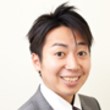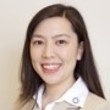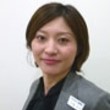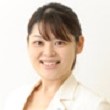-
I am the manager at Yokohama School. To me, a school is like a ship. I am the captain, and I have my crew. I need to tell them where we’re headed every month, and give them guidance as to how we are going to get there. Everyone has a different role in the crew, but they need to be able to do their jobs to the fullest in order for us to achieve our goal. If we aren’t rowing in the same direction, then we cannot achieve our goals. It’s important that everyone wants to achieve the same goal. In order to reach that goal, it goes back to communication. Without it, it’s impossible.
Click here to learn more about Yokohama and hear more from Kenji san. Kenji san - JapanYokohama School
Kenji san - JapanYokohama School
-
I live in Komatsu city in Ishikawa prefecture, on the west side of Japan. I am 15 minutes from both the beach and the mountains. I love snowboarding in the winter, and riding my bike and getting into nature in the summer. The fish and sake are amazing, and I have met the nicest of people here. My prefecture is packed with great places, and I think all of Japan is like that. I was surprised by the amount of things to do even though I live in the countryside. Also, I have met my best friends just walking around, or on my way home from work. So be open, go slow, and take it all in. I am taking Japanese language classes at the international center in my city. It has been a fantastic resource, offering really cheap Japanese classes, and also holding many events.
Click here to learn more about Komatsu and hear more from Chris sensei. Chris sensei - United StatesKomatsu School
Chris sensei - United StatesKomatsu School
-
I like that Nagoya is a very convenient, livable city. It’s big and has everything you need, without the overly hectic vibe of the bigger cities. The subway is extremely convenient and efficient, there are convenience stores on every corner and about twice as many vending machines. There are supermarkets (some of them open 24 hours), dry cleaners, banks and post offices within walking distance of my apartment. I can pay my bills at convenience stores, and they have ATMs, too, which make life very easy. At the moment, I’m taking Shodo (Japanese calligraphy) lessons. The lessons are taught by the mother of a former Japanese teacher at my school who suggested I take the class to improve my Japanese. There are also a lot of websites and groups on Facebook that are dedicated to certain things like sport, music, or simply organizing get-togethers.
Click here to learn more about Nagoya and hear more from Mervyn sensei. Mervyn Sensei - AustraliaMeieki School
Mervyn Sensei - AustraliaMeieki School
-
Training helped me with the flow of the lessons, how to deal with students when they don't understand what is being said, how to be aware of not being too wordy, and how to always make sure the students are talking. Although I can't say I mastered all that within the first months I arrived, I was able to work on each skill and become a better teacher within the first year. With the follow-up and grade-up trainings I was able to review what I learned in initial training and improve my lessons. The training I felt helped the most was the grade-up training. There I was able to talk about my students and how I can help them more. Also I was able to meet other teachers from different schools and see how they teach. By seeing them I was able to take little bits of their ways and add it to my ways. This has helped me a lot especially when I realized my old ways were not working as well as I thought it would.
Click here to learn more about Senri Chuo and hear more from Ayana sensei. Ayana sensei - United StatesSenri Chuo School
Ayana sensei - United StatesSenri Chuo School
-
Aziz sensei - United StatesKofu School
-
Making friends in Japan is easy. When I first arrived, I met many interesting people throughout the initial training period both at the AEON regional office and at my branch school. Teachers and students alike are eager to get to know you, and it is common to make new friends at restaurants, bars, and cultural festivals. There are many opportunities to interact, and become friends, with Japanese people. Whether at work or out on the town, I have constantly been able to meet locals. I meet my students outside of work about once a month. We often go out for meals, go shopping, and go to cultural festivities or historical places of interest together. It is always more fun being shown around by someone who grew up in the area!
Click here to learn more about Kobe and hear more from Stevie sensei. Stevie sensei - United StatesNishinomiya School
Stevie sensei - United StatesNishinomiya School
-
Training week was a whirlwind of information and practice. It was a great time to get to know fellow trainees and start to understand the company. The trainers were friendly and professional, always supportive of us. The week was quite tiring, but was good preparation for working in a school. Not only did we do practice of all the different lesson types, but the practice generally used a part of the textbook that we would actually be doing in class in our first week at school. This was fantastic, making that first week of teaching classes much easier and more comfortable. In my first three months, I had a follow-up training day, which gave a bit more detail about the business side of our work, and also attended a training seminar involving teachers from many schools and at many different levels of experience. This gave me much more insight into some of the materials we use, and it was great to discuss the experiences of those at other schools.
Click here to learn more about Gifu and hear more from Meg sensei. Meg Sensei - AustraliaGifu School
Meg Sensei - AustraliaGifu School
-
Asahikawa is a small town for Japanese standards, but I think that’s one of the reasons why the people here are so friendly. I often see students downtown at the weekend and it’s fun to have a quick chat with them. There are also a lot of festivals, and my students always have great recommendations for me. Japanese life is full of small inventions and ideas which make things easier, and I think that my own country could pick up those ideas too. For example, the ticket numbering system on the bus is quite easy, and you can do so many things at convenience stores, such as pay bills, buy tickets, and print photos. I have also found the rules of Japanese etiquette to be quite interesting, as well as the language itself, which I am currently studying. I have helped with some festival preparations. I painted some floats for a summer parade, which was pretty fun! My manager has a lot of local connections with people all over the town, so she finds out about events like this from time to time and invites the teachers to come along.
Click here to learn more about Asahikawa and hear more from Sarah sensei. Sarah Sensei - United KingdomAsahikawa School
Sarah Sensei - United KingdomAsahikawa School
-
Upon arriving in Japan, I was too excited for the first few days to notice how jet lagged I was. I was greeted at the airport by a trainer, and we met other trainees. We had a few minutes to introduce ourselves and talk about our home cities before we left for our hotel. The trainer very helpfully pointed out the grocery store and some restaurants near our hotel, and he met us in the lobby on the first morning to show us how to get to headquarters. The hotel room was simple and comfortable. It was a couple of subway stops away from the location of training. There was a small electric stove and a refrigerator, so I was able to cook for myself during training week. Initial training taught me about both the business and teaching aspects of life at my school. By the time the week was over, I knew how to teach an AEON lesson to different levels of students, I knew how I would be expected to interact with other teachers and office staff, and I understood my responsibilities all around.
Click here to learn more about Kyoto and hear more from Lola sensei. Lola sensei - United StatesKyoto Ekimae School
Lola sensei - United StatesKyoto Ekimae School
-
Training week was really well paced and informative. The trainers were very understanding of our adjusting to a new environment, so I did not feel overworked at all. Though there was a lot of information to cover, we were able to take lots of breaks, practice what was taught and work with each other to improve our lessons. It helped me understand the overall structure of the lesson and what was expected of me at the branch school. I felt that after initial training, I was comfortable teaching classes and I knew how to work with the staff as a team in order to create an enjoyable atmosphere for students. The follow-up trainings were a good forum for me to address any questions I had and receive feedback on how I can improve my lessons. The workshops enabled me to better understand some important aspects of school and utilize that knowledge to work with the staff and help students improve.
Click here to learn more about Sapporo and hear more from Sandy sensei. Sandy Sensei - United StatesEmergency Teacher
Sandy Sensei - United StatesEmergency Teacher
-
I have been working at the branch school in Kanazawa in Ishikawa prefecture for nearly 5 years. As I used to be a student at this school, I was really happy to return as a teacher. My responsibility as a head teacher is to support other teachers in their quest to provide good student care. Therefore, as a team leader I help the teachers reach their potential to be better assets to the school. Whilst living in Japan, foreign teachers might experience differences in culture and customs. I also give them support when they encounter difficulties at work or outside work. I help them to get their point across to other Japanese people and vice versa. I would like to create an atmosphere in which my colleagues can work well together.
Click here to learn more about Kanazawa and hear more from Hisano sensei. Hisano Sensei - JapanHead Teacher, Kanazawa School
Hisano Sensei - JapanHead Teacher, Kanazawa School
-
Initial training provided an overview of the nuts and bolts of AEON, both as a business and as a school. The introduction to the day-to-day expectations was dead on, and the practice and preparation time was a huge help when it came time to teach my first lesson. Having the opportunity to familiarize myself with the company and the classroom was instrumental in helping me build confidence in what I was doing, before I ever walked into my branch school. So far, I’ve only attended Self-Study training. The training was very useful in helping me understand exactly what the courses contained and how best to fit the right course to the right student, in order to make sure they are reaching the goals they want to meet.
Click here to learn more about Kumamoto and hear more from Matt sensei. Matt sensei - United StatesKumamoto School
Matt sensei - United StatesKumamoto School
-
I have been working at AEON for seventeen years, the first seven years as a part-time teacher and ten years as a head teacher, so I have had a lot of opportunities to work with Japanese and foreign teachers with various backgrounds. I especially try to maintain the best possible student care as AEON believes that it is one of the most important factors to make our schools successful. I cannot do all of this by myself, though. My belief is that staff members should always try to pull together, share information and work on problems as professionals. It is not easy, but at the same time, you would feel it’s rewarding especially when you see your students’ progress or improvement in class and get positive feedback from them. From my experience successful teachers are autonomous, flexible, proud of being professional, and ready to assist their co-workers at all times. Working abroad doesn’t always mean being able to explore somewhere different but means being apart from things you have been accustomed to for a long time.
Click here to learn more about Tennoji and hear more from Kumiko sensei. Kumiko sensei - JapanHead Teacher, Tennoji School
Kumiko sensei - JapanHead Teacher, Tennoji School
-
Yamaguchi isn’t too big or too small; the weather doesn’t get too hot or too cold. I’ve met a lot of nice people. It fits what I had in mind as a place I wanted to work and live. This area is famous for hot springs. I’ve really enjoyed the footbaths (ashi-yu). It was a mini adventure trying to find the location of all of them. My apartment is centrally located so it’s pretty easy to get around. There are three grocery stores, four convenience stores, two small post offices, quite a few dry cleaners and laundromats. I’m also within walking distance of the train station. I take Japanese lessons, play soccer and volleyball. I also take a bus tour annually to different parts of the prefecture. My Japanese teacher usually tells me information about sightseeing events or day trips. My co-worker (another foreign teacher) helped me set up my Japanese lessons and my students have also told me about events when they know I’m interested in them.
Click here to learn more about Yamaguchi and hear more from Reshia sensei. Reshia sensei - United StatesYamaguchi School
Reshia sensei - United StatesYamaguchi School
-
Marnie sensei - AustraliaKagoshima Tenmonkan School
-
My students are suburbanites so they are very welcoming to me each week. I enjoy hearing amazing stories about their lives and help them reach their English goals. At times we share laughs and cultural differences during lobby talk. After the kids follow up workshop, I began to see that my students were excited about learning English, just a little too excited. Over time I came up with unique tactics to channel their energy into the lesson; I always have to keep in mind: ‘Hey, they're just kids.’ Now I love classes with energetic children. They pay attention to how you respond to them. I always arrive to work 20 minutes early. It takes me five minutes to clean up around the school before the morning meeting. Early afternoons can be quiet so I may or may not have a first class; therefore I assist my Head Teacher or Manager. I have four classes back to back after lunch so I’m usually energized ready to teach kids and adult lessons.
Click here to learn more about Oyama and hear more from Tia sensei. Tia Sensei - United StatesOyama School
Tia Sensei - United StatesOyama School
-
Elizabeth sensei - United StatesGakuenmae Ekibiru School
-
Josh sensei - United StatesIchihara Goi School
-
Doing errands in Yamagata is so easy! There is a 24 hour supermarket between my flat and the office. Even if we finish work late I know that there will be no problem if I need to buy some groceries. The post office is only 2 minutes from the office so if I need to send a letter home there is plenty of time to go on my lunch break and all the staff are really friendly and helpful. Banking can be a bit daunting but my manager helped me to set up my account and once you have learnt the meanings of a few of the buttons on the ATMs withdrawing money and checking your balance is really easy. I cannot read any kanji but I have no problems using the ATMs. The biggest problem for me is remembering that the ATMs are not 24 hours and you will get charged for using them on the weekend, even if it’s your bank’s ATM that you are using so make sure you have plenty of cash on you before the weekend starts! The most important errands in Japan, paying the bills, are the easiest. All you have to do is take your bills to a convenience store and pay them at the counter. The convenience stores are 24 hours and are everywhere in Japan.
Click here to learn more about Yamagata and hear more from David sensei. David Sensei - United KingdomYamagata School
David Sensei - United KingdomYamagata School
-
Brittany sensei - United StatesHiroshima Ekibiru School
-
Our school is quite large and surprisingly busy for being in such a small town. I’m able to manage my schedule by staying organized and communicating with my coworkers if I ever have questions or need help. Using my time wisely also helps me to maintain my composure throughout the day. I never feel overwhelmed at school because I’m able to stay on top of my responsibilities. On a typical day at work I have anywhere from 5-8 classes. I usually have an office hour early in the day to do any administrative work that I have to complete. My lunch break is an hour long and is usually in the earlier half of the day. Our school is busiest in the evening as kids get out of school and adults finish work.
Click here to learn more about Ube and hear more from Stephanie sensei. Stephanie sensei - United StatesUbe School
Stephanie sensei - United StatesUbe School
-
Michael sensei - United StatesToyonaka School
-
Miyazaki has a very relaxed atmosphere compared to other cities in Japan. The weather is warm, the food is delicious, and the people are so nice and relaxed. Even in the bottom of Kyushu, there are plenty of Western conveniences to help with the transition. Coffee shops (even Starbucks), Western style malls, foreign food stores, fast food chains, etc. Dry cleaning is easy and I don`t speak Japanese (there is some pointing at a calendar and nodding involved). Grocery stores take a little time to get used to especially all the sauces, fish, and other alternative tastes of the Japanese diet. Once my bank account was setup, banking was relatively easy. The post office can be a little tricky with all the paper work and all, but the workers are so helpful and they have many English guides to assist you. I take Japanese lessons twice a week at the International Center located in the same building as my branch school. The outgoing foreign teacher helped me set up the lessons.
Click here to learn more about Miyazaki and hear more from Joe sensei. Joe sensei - United StatesMiyazaki School
Joe sensei - United StatesMiyazaki School
-
Arrival in Japan was easy and smooth. The train from Narita connects directly with the line going to the training house. It was very interesting to see everything en route. Everything I needed for my week in training was available to me. It was a good primer to get me ready for life in Japan as it was quite a suburban area with not too many distractions from preparing myself for the challenge ahead. Training was great. It provided me with the basic tools I needed to succeed. Get to know the people you train with as they will probably be your best friends during your time in Japan. It’s very important to make sure you get enough rest, though, as you will need to be a ‘sponge’ to absorb all the tips and tricks that the trainers have. The training provided me with the basic tools I required, but your success is by and large up to your effort.
Click here to learn more about Aomori and hear more from Michi sensei. Michi sensei - AustraliaAomori
Michi sensei - AustraliaAomori
-
I go to two separate Japanese language classes. They are both organised by volunteers and they are very keen to arrange cultural exchange events. The last event I attended was a trip to an old pottery town. Recently though I have taken up salsa classes. The other salsa students are Japanese. They have got used to me now and all try little conversations in Japanese to try to help me. I found out about this class from some Japanese friends who go to the same school. My Japanese classes were advertised in local information sheets and in an English magazine. My apartment is a modern loft style apartment. It consists of one main room which has a built-in bookcase and walk-in closet, over which is my sleeping area. It`s a bit like being on the top bunk. There is also a built in table and desk in this room. The entrance corridor is my kitchen with a separate toilet and bathroom off of it. The main room is fairly bright as it has a large balcony, which is great for drying clothes. I was supplied with bedding and kitchen utensils when I first arrived.
Click here to learn more about Kasugai and hear more from Julie sensei. Julie Sensei - United KingdomKasugai School
Julie Sensei - United KingdomKasugai School
-
On a typical workday, I come in, help the Japanese staff with cleaning, and set up my room for my classes. I teach anywhere between one to three classes before lunch. Between each class I chat with students in the lobby, or work on Self Study check tests (additional study materials that students purchase to supplement their skills). After lunch I teach between two to three children’s lessons and then change pace back to adult lessons. My days tend to keep a quick pace and pass fairly swiftly. It was quite challenging to keep a group of six year olds attention for extended periods of time but I worked to find games and activities that each child enjoyed and when I saw their attention waning I tried to change the pace of the lesson to keep them constantly engaged. Naturally, over the course of a year this is an ongoing challenge that requires fresh supplies of solutions constantly.
Click here to learn more about Hashimimoto and hear more from Lexee sensei. Lexee sensei - United StatesHashimoto School
Lexee sensei - United StatesHashimoto School
-
The city of Sendai is the biggest city in the Tohoku area, and Sendai Ekimae School is the biggest English Conversation school in this region. Many students commute a long way from nearby prefectures for work and school in Sendai, but at the same time, there are also many students who live nearby that come to AEON just as their hobby. Our students come from various backgrounds and study for various reasons. Recently, more and more students are studying English for business. By interacting with the students, the teacher can learn more about Japan, and grow as a person. Therefore, a teacher who can be flexible to each student’s expectations and needs would be successful. AEON welcomes people that can work in a team, are friendly and outgoing, and take on the responsibility of teaching their students to the fullest.
Click here to learn more about Sendai and hear more from Miki san. Miki san - JapanSendai Ekimae School
Miki san - JapanSendai Ekimae School
-
I know it can seem like a lot to juggle for some people, but I really like the variety of students I teach throughout the day. Every class has a unique makeup of personalities and goals that makes the class atmosphere unique itself. Teaching any age between preschooler and retiree, or people with any career, from business owner to homemaker. The lessons are usually pretty energetic, and students really have a passion to talk, so the day flies by really quickly!
Click here to learn more about Okinawa and hear more from Mitch sensei. Mitch sensei - United StatesNaha Kokusai-Dori School
Mitch sensei - United StatesNaha Kokusai-Dori School
-
Kathryn sensei - CanadaOkayama Ekimae School
-
Upon coming to Japan, I was welcomed by the amazing trainers and quickly introduced to others in the same position. Coming to my branch was another opportunity to make many friends since I’m happy to say that I consider my co-workers my close friends as well. It’s quite easy to make friends in Japan since as an AEON teacher, we are meeting people every day. I am taking Japanese lessons and tea ceremony lessons. I found out about the Japanese lessons through both AEON and the international center in Matsuyama. I am studying Japanese to improve my everyday speaking as well as for the Japanese Language Proficiency Test (JLPT). As for tea ceremony, I found out about it from my co-worker. We take lessons together once a week. It is very fun and challenging, but I really enjoy learning about this aspect of traditional Japanese culture. I am also involved in a public speaking club called Toastmasters, which held in both English and Japanese. I found out about this club through my friend.
Click here to learn more about Matsuyama and hear more from Kim sensei. Kim sensei - United StatesMatsuyama School
Kim sensei - United StatesMatsuyama School
-
First, I just like the people, most of my students have been super nice people and I really enjoy just talking with them. I like to watch them grow in the language, but my favorite thing is when I get to see them meet a goal. I love hearing that a student went overseas and how much they got out of it because of their language knowledge. My personal biggest challenge was nervousness; I didn’t know how I was going to do over here in a new country teaching. I overcame that with the friendliness and helpfulness of the people I worked with. First they made me feel very comfortable and relaxed and secondly they were there for me any time I needed any help at all.
Click here to learn more about Tottori and hear more from Ben sensei. Ben sensei - United StatesEmergency Teacher
Ben sensei - United StatesEmergency Teacher
-
Stefan sensei - CanadaChofu School
-
Jose sensei - United StatesMito School
-
Kristine sensei - United StatesKita Narashino School
-
When I first arrived in Japan, I was very nervous because I didn’t know anyone and I had never lived on my own at that time. I felt homesick at the beginning. However, I was excited to be in Japan because it was one of my lifelong goals that I have now accomplished. During Initial Training, the accommodations were nice and comfortable. The training staff took care of me and the room I stayed in was well furnished and clean. Initial Training was tough, but really informative. I learned a lot from the trainers and they were very supportive when it came to teaching lessons and providing tips. The training gave me several opportunities to get used to the AEON method of teaching lessons. After Initial Training, I have been to several workshops while working as a teacher at AEON. They have provided me with plenty of tips and feedback that I have used to make my lessons more enjoyable. Looking back at where I was as a teacher during my first year, I can say that the workshops have molded me into a better teacher for my school and students.
Click here to learn more about Tokorozawa and hear more from Anthony sensei. Anthony sensei - United StatesTokorozawa
Anthony sensei - United StatesTokorozawa
-
Connor Sensei - IrelandOhashi School
-
Life in my city is great because it’s easy to get around by bike. Many people drive so the sidewalks are open to bike on. My city has lots of restaurants and food is not too expensive compared to the larger cities. The atmosphere of the city and people is relaxed and that fits my personality. My apartment is one room with a loft. The loft is a great additional section of the apartment. It’s especially nice during the winter because it is very comfortable and warm up there. The kitchen and bathroom are in a separate section of the apartment near my entrance. The apartment has all the necessary basics for living and it was all provided to me when I moved in.
Click here to learn more about Fukuyama and hear more from Peter sensei. Peter sensei - United StatesFukuyama School
Peter sensei - United StatesFukuyama School
-
My apartment is nestled in a little residential area near the city center. It’s in a fairly new three story building with four units on each floor. It has a small kitchen which has two electric hot plates and a stove. There is a main living area with a table, desk, chairs, cable, and internet connection. I have a closet but space is extremely limited. My apartment also has a loft which allows for more space in the living area. Over all though, it’s a nice setup. In the spring, summer, and fall, I like to go to local festivals. The most notable one I’ve been to was a giant kite battle held in the country side. I went to a pro wrestling match, and some of the live performance venues to see local bands. And of course, I study Japanese every weekend. I take a two hour lesson which helps with speaking. At home I spend a bit of time learning kanji, which has made a world of difference in my experience in Japan.
Click here to learn more about Niigata and hear more from Cliff sensei. Cliff Sensei - United StatesNiigata Bandai School
Cliff Sensei - United StatesNiigata Bandai School
-
Jessica Johnson - United StatesKozoji School
-
Genevieve sensei - United StatesHikarigaoka School
Yokohama
Yokohama
Komatsu
Komatsu
Nagoya
Nagoya
Senri Chuo
Senri Chuo
Kofu
Kofu
Kobe
Kobe
Gifu
Gifu
Asahikawa
Asahikawa
Kyoto
Kyoto
Sapporo
Sapporo
Kanazawa
Kanazawa
Kumamoto
Kumamoto
Tennoji
Tennoji
Yamaguchi
Yamaguchi
Kagoshima
Kagoshima
Oyama
Oyama
Nara
Nara
Ichihara Goi
Ichihara Goi
Yamagata
Yamagata
Hiroshima
Hiroshima
Ube
Ube
Osaka
Osaka
Miyazaki
Miyazaki
Aomori
Aomori
Kasugai
Kasugai
Hashimoto
Hashimoto
Sendai
Sendai
Okinawa
Okinawa
Okayama
Okayama
Matsuyama
Matsuyama
Tottori
Tottori
Chofu
Chofu
Mito
Mito
Kita Narashino
Kita Narashino
Tokorozawa
Tokorozawa
Ohashi
Ohashi
Fukuyama
Fukuyama
Niigata
Niigata
Kozoji
Kozoji
Tokyo
Tokyo